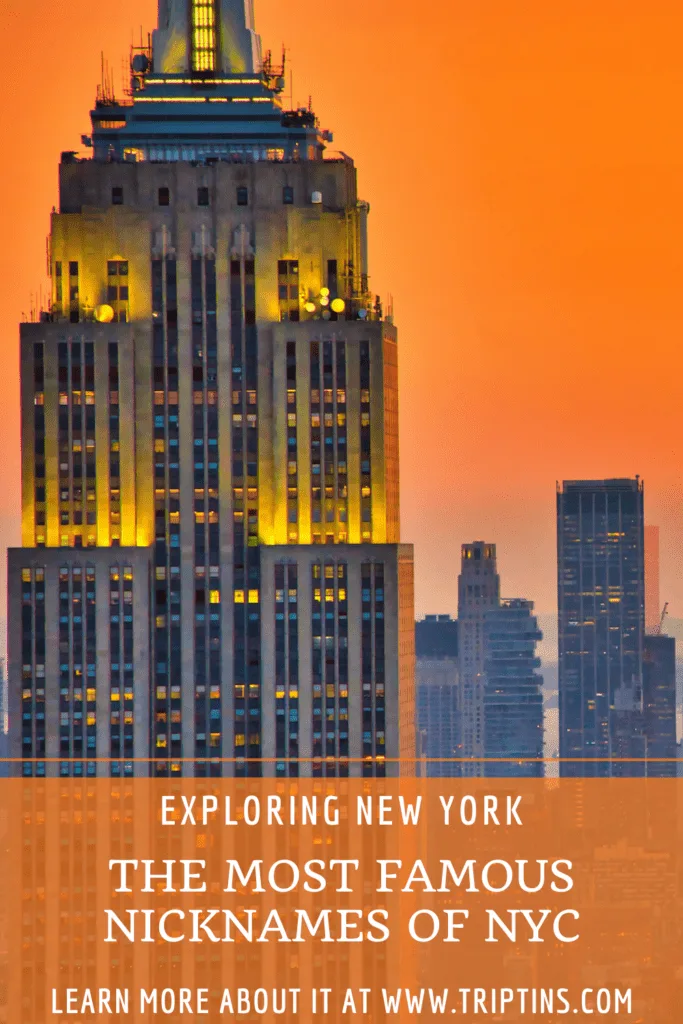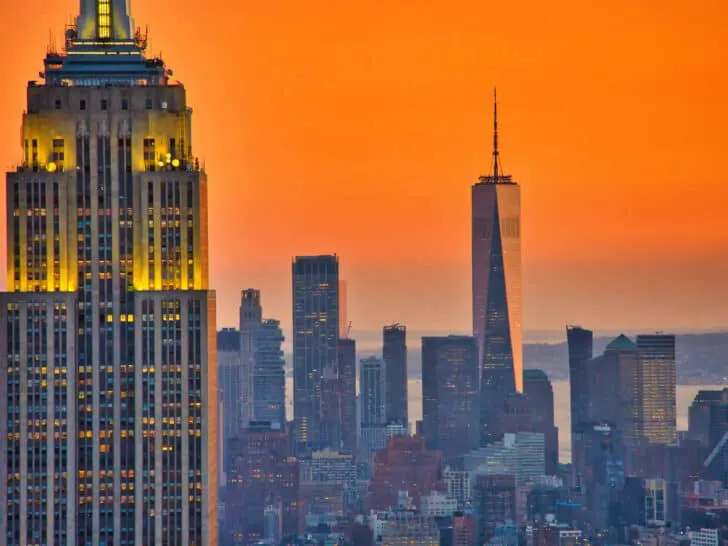It may have not been around for too long in history, but that hasn’t stopped New York City from making itself arguably the most famous city in the world.
Indeed, the Big Apple is so well known that it has acquired no small number of nicknames during its time.
Some of these NYC nicknames are almost as well known as the city that never sleeps itself. Chances are you’ve heard of a lot of them.
During the course of this article, we’re going to take a look at the various nicknames of New York. What are they? Where do they come from? And what makes them so memorable?
Let’s take a look at the numerous nicknames used to describe the greatest city in the world!
* Affiliate Disclosure: This post may contain affiliate links, which means I may receive a commission if you make a purchase through the links provided, at no additional cost to you. Thanks for supporting the work I put into TripTins!
1) The Big Apple
The Big Apple is perhaps the most famous of nicknames of New York City. But it is also one of its most mysterious.
After all, the city doesn’t resemble an apple in any way, shape or form. Nor is the apple a particularly notable part of New York cuisine. Where, then, did this nickname come from?
The nickname doesn’t have its roots in New York City at all, but in horse-racing parlance.
In the 1920s, New York City’s racetracks were considered huge and important venues, and stable hands would refer to going to NYC as going to the ‘big apple’. John J. Fitz Gerald, a track journalist for the New York Morning Telegraph, overheard the expression while at a stable in New Orleans.
Fitz Gerald then began to slip references to the ‘big apple’ into his columns.
The earliest reference can be traced to a column published on May 3rd, 1921. Fitz Gerald wrote that a jockey was scheduled to start “for the big apple”.
He then made frequent use of the phrase, and in a 1924 column elaborated upon its use as referring explicitly to New York. It was around this time that he began capitalizing the phrase.
The phrase grew in popularity throughout the 1920s. By the end of the decade ‘The Big Apple’ was a popular dance and song, as jazz musicians frequently used the phrase in their lyrics. There were also two nightclubs around that time that used ‘Big Apple’ in their names.
Use of the phrase persisted into the 1950s, but by that time it was considered a bit passé. It gradually fell out of use as a result.
The phrase was little-used throughout the next two decades, still perceived as outdated and clumsy.
However, in NYC’s fiscal crisis in the early 1970s, city leaders searched desperately for a way to restore the city’s image as a strong and powerful one.
The ‘Big Apple’ nickname was thus reclaimed, and was used heavily to market the city to tourists. This time, it didn’t fall out of fashion, and remains New York’s most iconic nickname to this day.
Fitz Gerald’s role in bringing the phrase into the public eye was commemorated in 1997 by then-Mayor Rudolf Giuliani. He designated Fitz Gerald’s former place of residence as “Big Apple Corner”.
Learn More | The 100 Best Things To Do in New York City
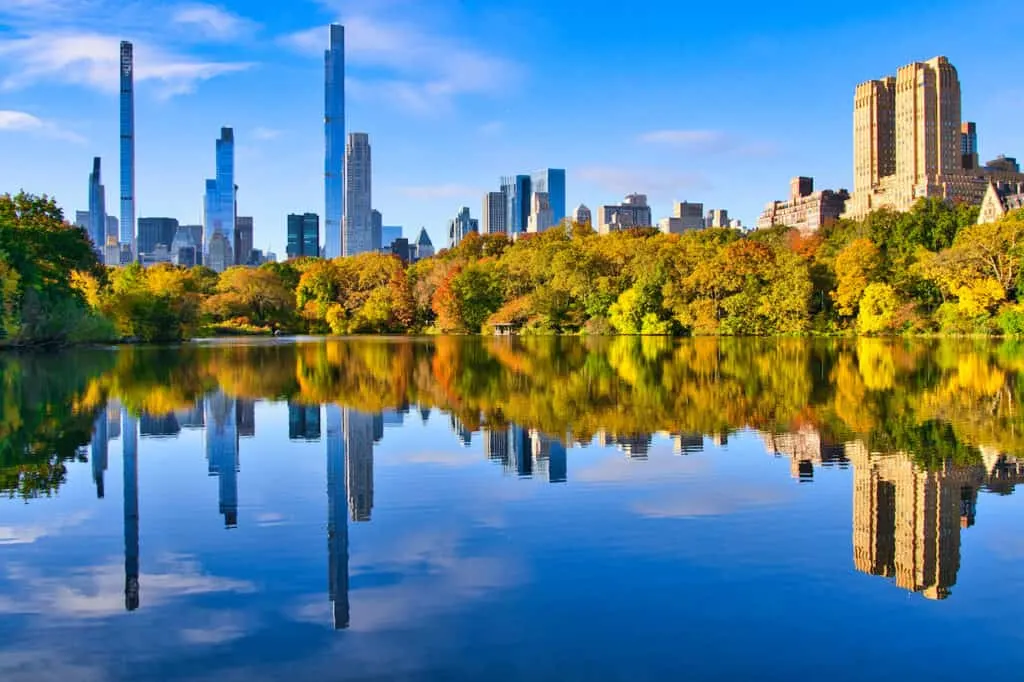
2) City That Never Sleeps
Though this NYC nickname is most commonly associated with New York, the fact is that it has been applied to countless cities across the world.
The list of cities to have this moniker applied include Madrid, Barcelona, Berlin, Chicago, Buenos Aires, Las Vegas, Moscow, Shanghai, and many more.
Its use to refer to New York City has its roots in the Martin Scorsese movie New York, New York. The movie – a rare musical outing for Scorsese – stars Robert DeNiro and Liza Minelli as a pair of musicians who fall madly in love.
During the course of the movie, DeNiro and Minelli’s characters collaborate on the song, with the former providing the music and the latter the lyrics. Both characters perform the song towards the end of the movie.
The song (actually entitled “Theme from New York, New York”) didn’t become popular until it was picked up by legendary singer and actor Frank Sinatra.
Sinatra altered the lyrics a little (adding “A-number one” twice) and recorded the song in 1979. In 1980 it became his final top 40 hit, and one of the songs most associated with him as a singer.
It is because of the song’s reference to New York as “…the City That Never Sleeps” that the nickname began inextricably linked to the city.
Nowadays, anyone using the phrase almost certainly is not referring to Shanghai or Madrid, but to the Big Apple itself – New York City.
Learn More | Top Things To Do in NYC at Night
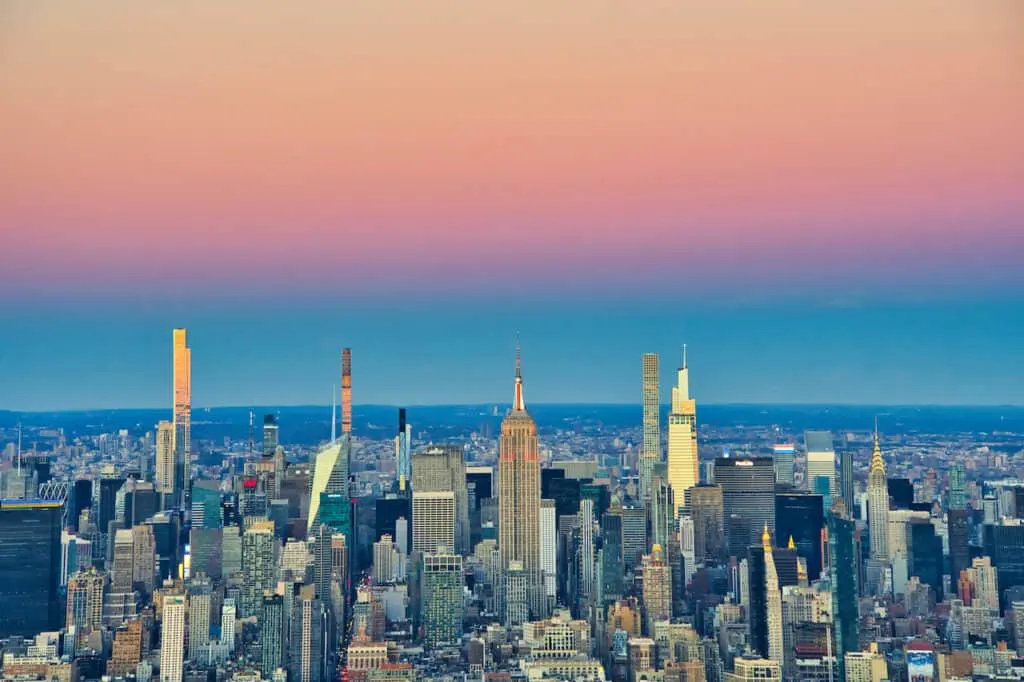
3) Empire City
This nickname of New York ultimately derives not from the city itself, but from the state of New York – long dubbed the “Empire State”.
Why is New York State called the “Empire State”? Unlike some of the other nicknames of New York on this list, there is no definitive answer to that.
As writer Paul Eldridge put it: “Who was the merry wag that crowned the state? New York would certainly raise a monument to his memory, but he made his grandiose gesture and vanished forever.”
There are multiple theories as to the origins of the nickname.
Benjamin F. Shearer and Barbara Smith Shearer speculated, in their book “State Names, Seals, Flags and Symbols”, that perhaps it was due to the historical wealth and power of the state, but this is not universally accepted.
Some historians speculate that it was George Washington himself who coined the phrase. In a 1785 letter to New York governor James Duane, Washington referred to New York as the “Seat of the Empire”.
He also reputedly called the state the “path to empire” in a conversation with Duane’s successor, George Clinton, during a conversation in the 1790s.
Whatever the ultimate origins of the phrase, it has become synonymous with the city of New York as well as the state. It was further immortalized in the 2009 anthem and love letter to the city, Empire State of Mind.
Learn More | Visiting the Empire State Building
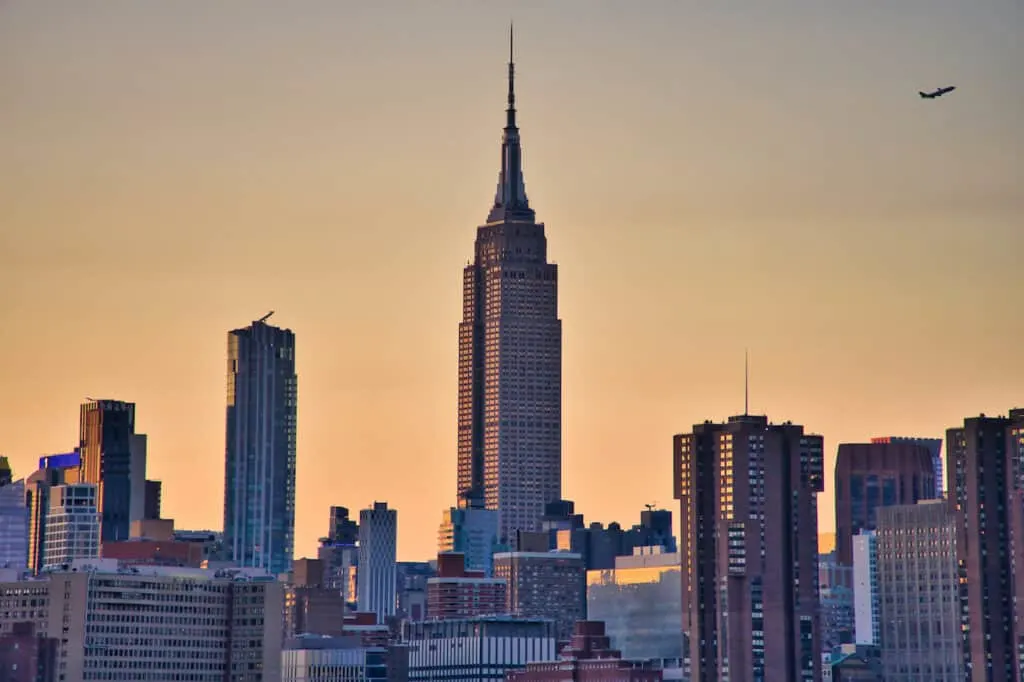
4) Concrete Jungle
‘The Concrete Jungle’ is another nickname of New York. It features prominently in Alicia Key’s soaring chorus for Empire State of Mind.
Contrary to some of the other nicknames, it didn’t actually come about to refer to New York specifically. Rather, it was originally used to refer to any city.
The phrase’s origins are unclear, but may lie in the 1949 novel “The Jungle” by Upton Sinclair. Sinclair never actually uses the phrase “the Concrete Jungle”, but rather he writes of the “Asphalt Jungle”.
The actual phrase was first used by Desmond Morris, a zoologist from the UK, who put the term into print in his book “the Human Zoo”. It was again used by Jamaican musician Bob Marley in his song (entitled, fittingly enough, “Concrete Jungle”).
It was, however, Keys’ use of the phrase in Empire State of Mind that solidified New York as the world’s pre-eminent “concrete jungle”. For most people, the phrase is now synonymous with the city.
Learn More | Best Photo Spots in NYC
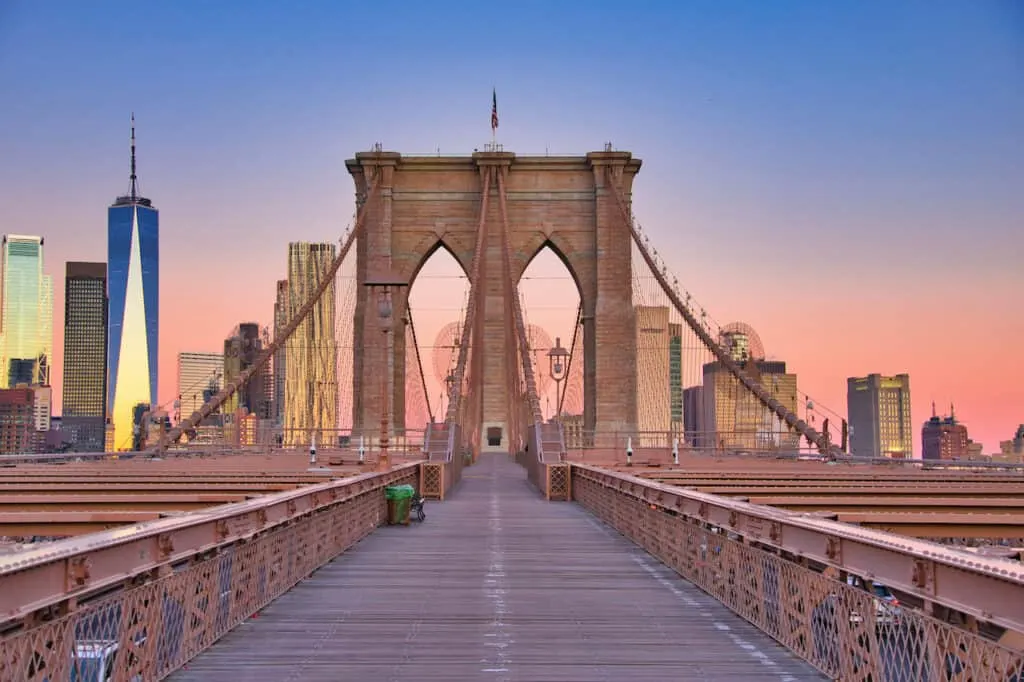
5) The Five Boroughs
New York City is more than just Manhattan, and less than the New York Metropolitan Area.
Sometimes, to distinguish the city from these other areas, it is referred to as the “Five Boroughs”.
The nickname refers to the historic five boroughs that were consolidated to create New York City in 1898. The five boroughs are Staten Island, Manhattan Queens, the Bronx, and Brooklyn.
Each of the boroughs is also a county in of its own right. Although the county names sometimes differ from that of the borough.
Those counties are Queens County (Queens), Bronx County (the Bronx), New York County (Manhattan), Kings County (Brooklyn) and Richmond County (Staten Island).
Though one of the lesser used nicknames for New York City, “the Five Boroughs” is nevertheless a nickname that bears historical significance to the city and the process that created it.
Learn More | Walking Across the Brooklyn Bridge
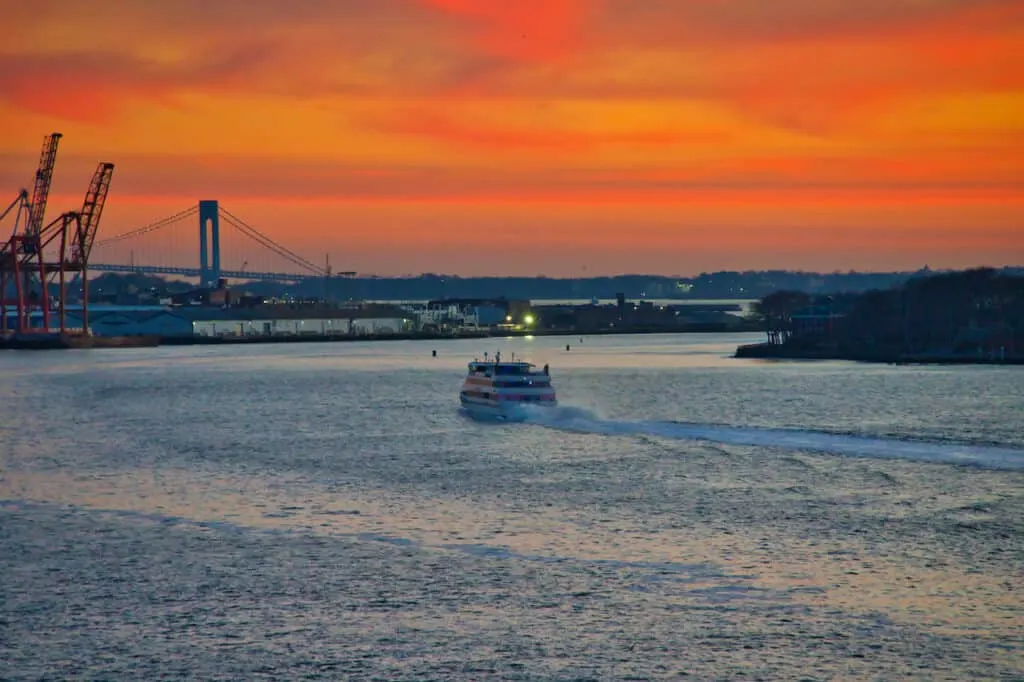
6) Melting Pot
New York City is undoubtedly the city of the immigrant. In popular fiction, arrival at Ellis Island has long symbolized the start of the American Dream. It has been featured in such iconic movies as The Godfather Part II and Gangs of New York.
This, by extension, has caused the USA in general – and New York in particular – to be nicknamed the “Melting Pot”.
The phrase refers to the idea that heterogeneous cultures and people will ultimately come together and assimilate into one larger, homogenous culture.
The phrase has been in American discourse since the late 18th century. It was the 1908 play The Melting Pot that truly popularized it.
The play, by British playwright and cultural Zionist Israel Zangwill, concerns a Jewish-Russian immigrant who immigrates to New York and falls in love with a Russian-American woman. The play is largely concerned with advocating for the sort of ethnic assimilation that the term has come to embody.
Critics of the term prefer to use alternatives such as “salad bowl” or “kaleidoscope”. These phrases emphasize the idea that different cultures can mix, while retaining unique aspects of their own cultures.
Indeed, it could be argued that New York City, with its culturally and ethnically distinct boroughs and neighborhoods, embodies the salad-bowl ideal much more than the melting-pot one.
Nevertheless, the “Melting Pot” remains a potent idea for the American Dream, and a recurring nickname for New York City.
Learn More | The Best Views of New York City
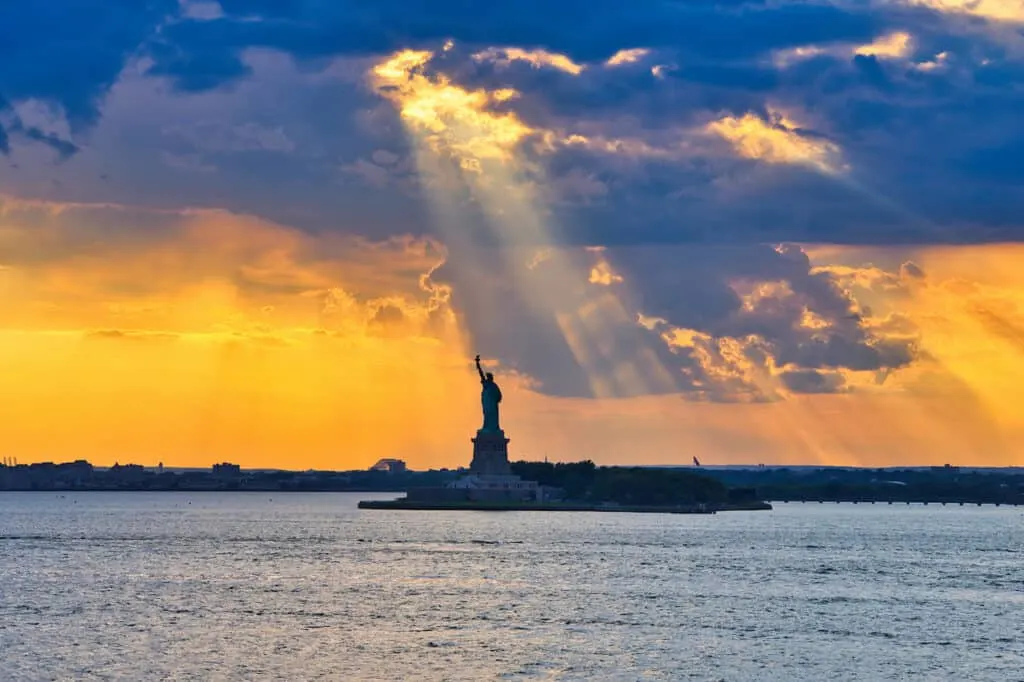
7) Gotham
Gotham City is well known as the home city of popular DC superhero Batman, and it is equally well known that Gotham is largely based on New York City.
The nickname of “Gotham” as applied to NYC, however, does not come from Batman. In fact, it pre-dates Batman completely.
The ultimate origin of “Gotham” as a nickname for New York City lies with writer Washington Irving. He was the author of the popular short stories Rip Van Winkle and The Legend of Sleepy Hollow.
Irving was less well known for his satirical magazine, Salmagundi, to which he contributed articles alongside his friends. It was in the pages of this periodical that he coined the name better associated with Batman.
The name was not a flattering one. Irving took it from English proverbs about the (possibly fabricated) medieval English town of Gotham or ‘Gottam’, meaning “Goats’ Town” in Anglo-Saxon.
In folk tales, the village is populated entirely by idiots (or, possibly, people simply pretending to be fools). Irving’s motivation in coining the nickname, then, was to insult New York and its people in a rather underhanded way.
Despite this, the nickname has ultimately been reclaimed due to its association with Batman.
One Batman editor noted that Gotham (as it appears in the comic book) evokes New York’s “noirish” side – as opposed to that other great fictional New York analog, Metropolis.
It’s this association with steaming manhole covers, metal fire escapes and soaring buildings that has stuck, rather than any association with English villages of goat herders.
(As a side note: Batman co-creator Bill Finger did not take the name “Gotham” from Irving’s work. Rather he came across it by pure chance in a New York telephone directory.)
Learn More | Where to Stay in New York
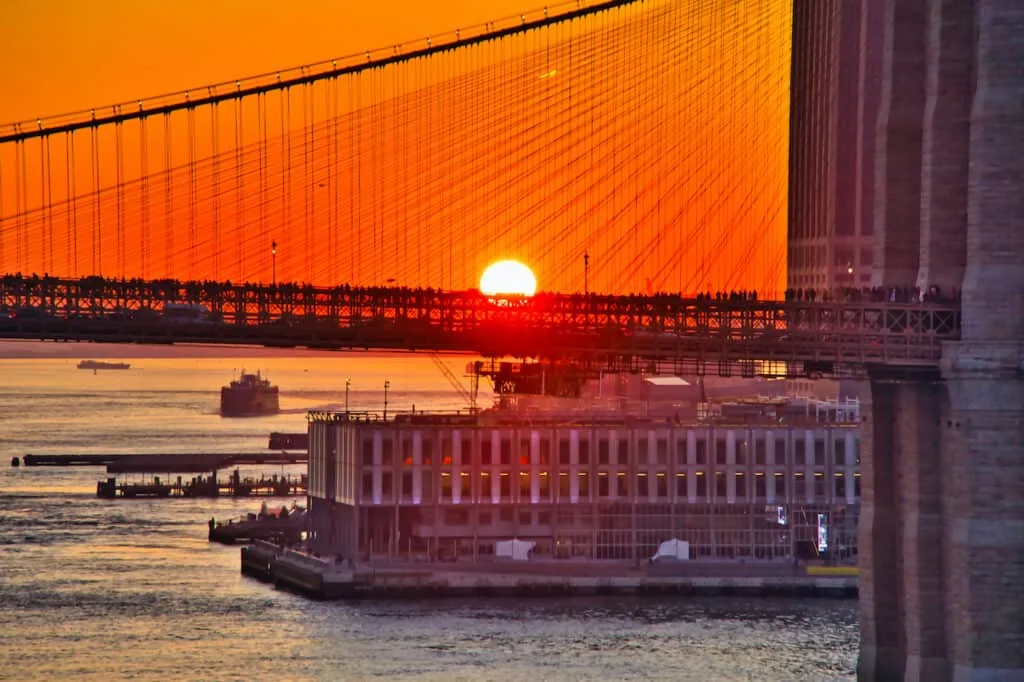
In a city with as rich and storied a history as New York, there is bound to be no small number of nicknames. Although we’ve covered the most frequently used (or historically important) ones, there are certainly some more New York nicknames out there.
The Big Apple is sure to generate another nickname or two in its time. It’s just a case of waiting to see what other fitting monikers can be applied to the so-called “greatest city on earth”.
Hope you enjoyed learning more about some of the most famous nicknames of New York.
If you are interested in visiting NYC, be sure to check out all of the New York itineraries and guides up on the site (like this 4 day New York itinerary).
Have fun out there and safe travels!
